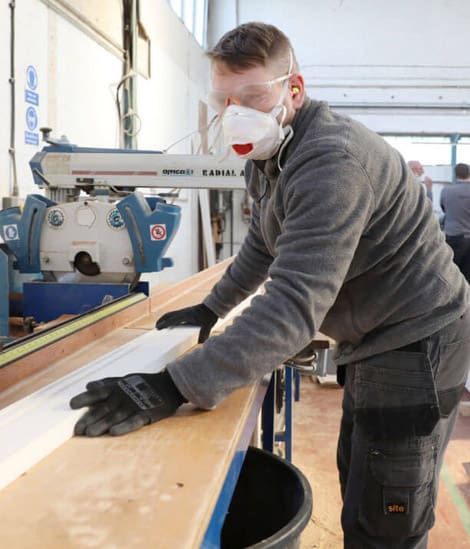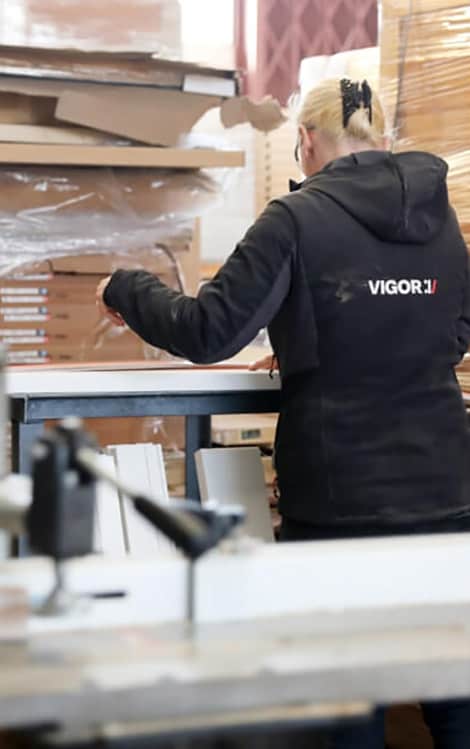Everything you need to know about FD30 Fire Doors
The number one reason to purchase fire doors and install them in buildings is to save lives in the event of a fire.
The second is to minimise property damage.
An FD30 is the most common type of fire door, and will last a minimum of 30 minutes in a fire. That 30 minutes of protection against the spread of fire or smoke could be the difference between life and death.
An FD30 can therefore provide a vital window of time in which people can escape and the fire brigade can get on top of the blaze before it gets out of hand.
Why buy and install an FD30?
Tragically, there have been more than 500 fire-related deaths in the UK in the past three years, and there have been more than 200 in the years 2019/20.
While there are, very sadly, circumstances in which little or nothing can be done to save lives, fire safety measures like FD30 fire doors can go a long way towards reducing the risk of fire-related deaths or injuries.
While the numbers of fire-related deaths in the UK each year are still unacceptably high, those numbers have reduced considerably since the year 2000. That’s thanks, in large part, to increased fire awareness among the public and the introduction of much more stringent fire prevention or protection measures in domestic and commercial building settings.
An FD30 is one such fire protection measure, and these fire safety doors have a big part to play in saving lives and preventing the spread of fire.

Where are FD30s required?
Fire doors are required in almost every building built in the UK.
You may not notice them, but fire-rated doors are found in nearly every building you can conceive of, from shopping centres to cinemas, and from hospitals to blocks of flats.
Multi-occupancy property owners are required by UK law – the Regulatory Reform (Fire Safety) Order 2005 – to ensure that their premises reach required standards of fire safety.
If you are responsible for a property, you must make fire safety precautions to keep the people who use it safe. This includes almost all buildings, places and structures other than individual private homes (for instance, individual flats or family houses).
A property manager’s responsibilities include shared areas in houses in multiple-occupation (HMOs), blocks of flats and maisonettes.
FD30s are a crucial element of fire safety strategy, and are a legal requirement for flats that open onto communal areas shared with other tenants. This is to make sure crucial escape routes like corridors and staircases are protected if a fire breaks out.
In domestic dwellings above two storeys, every door leading to the stairwell (at all
levels) must be a fire door where the door leads to a habitable room (not a bathroom or toilet).
They are also required in:
- loft conversions
- between a house and integral garage
- between a business and residential elements in a mixed-use building.

What are FD30 fire door?
FD30 is the standard given to fire doors that can hold back the spread of fire for up to 30 minutes, thereby helping save lives and protect property.
Fire doors are made of a combination of resistant materials, such as glass, gypsum, steel, timber and aluminium. Some include windows made from fire-resistant wired glass.
One important thing to remember when you’re having a FD30 installed is that the door supplier should give you a certificate confirming that the door meets this specification – crucially, this includes any ironmongery or letterbox supplied with the door set.
Alternatively, the door should be certificated by the BM TRADA Q-Mark scheme or BWF (British Woodworking Federation) Certifire scheme
A test certificate for all fire doors should be provided to the property owner or property manager by the contractor supplying and/or fitting the door.
Building regulations requirements can vary depending on the type of building and where in the building the door is located. For instance, a FD60 fire door providing 60 minutes of protection will be required for commercial buildings, while an FD30 will suffice for domestic dwellings.
Request a Quote:
What do FD30s look like?
Although the typical FD30 is a fairly indistinct functional blank door, FD30 fire door can vary greatly in design.
Vigor Doors, for example, manufactures and installs fire resistant standard FD30s. But we are also very pleased to be able to offer highly attractive customised designs designed to fit your surroundings.
Our bespoke design service and craftsmanship allows us to design beautiful FD30s that match and stand tall in any environment.
Hinges, seals, handles, glazing and other components are as important as the door itself. This is because, in a fire, doors can warp, move and allow smoke and fire through the opening. The seals and the gaps between the door frame and the wall are really vital too. They also stop smoke and fire spreading as quickly.
We can add a number of features that will help your FD30 fit into any décor, including certified ironmongery such as beautifully crafted handles, drop seals, locks, latches and door viewers.
We recommend that you speak to a member of our highly knowledgeable and friendly team if you’re looking for FD30s with designs that better suit their surroundings without compromising on safety. Equally, we’ll be happy to talk you through the details of a standard FD30 with a more functional design.
Tell us more about seals
Intumescent fire seals expand in the event of a fire and seal off the gap between the door and the frame, preventing the spread of fire and smoke. Smoke inhalation, if you didn’t already know, is the main cause of fire-related deaths and serious injury.
A combined fire and smoke seal prevents the spread of smoke prior to the fire seal activating.
For optimum effect, seals must be properly fitted to the door frame or the FD30 itself. It is also very important to fit the correct size of seal, to minimise gaps that might allow smoke through. This goes to show how important it is to have FD30s and all associated products installed by an expert.
Why it’s important to maintain FD30s
Like anything, FD30s are subjected to wear and tear over time.
We can’t stress enough, therefore, how important it is that your FD30 is not only manufactured to the highest standard but also installed correctly and maintained over time.
As we’ve established, FD30s are built to withstand 30 minutes of fire, but their capability to protect lives and property will be undermined if they are incorrectly installed or poorly maintained.
It’s especially important to maintain them if they are used frequently, if they are altered in any way or are placed in environments where they could get damaged easily.
Maintenance and regular inspections can be organised through your contractor, who will usually offer a subscription to their periodic maintenance services.
Read our blog Common Faults That Lead To Fire Door Failure to find out top tips and advice on how to properly maintain yours.
Why Vigor Doors FD30s are a class apart
We’re totally committed to delivering FD30s and other products and projects on time, to the highest standards and on budget.
That’s why our focus is front-heavy – we always make sure we get a total understanding at the start of the project, so that we’re all on the same page.
Once we receive a customer’s FD30 requirements and specifications, we make sure we fully map out the potential order and understand every aspect, so that we can provide a fair and accurate quote for the work.
Above all, we’re incredibly passionate about keeping people as safe as possible in the event of a fire, which is why you’ll get the best product, installation and service you could ask for.
Get FD30 fire door right the first time. Speak to a member of our Vigor Doors team on 01642 265 034, or alternatively drop us a line at info@vigordoors.com – we’ll be more than happy to help.
- Company registered number: 11892199
- Place of registration: England and Wales
- Copyright © 2025 Vigor Doors. All rights reserved
- Corpsvector
